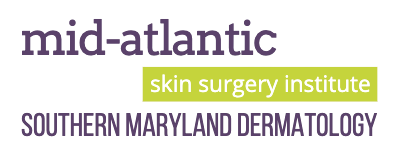
Non-Surgical Fat Reduction Maryland
If you are considering non-surgical fat reduction in Maryland, continue reading as we compare the top 5 non-surgical fat reduction treatments.
In the past, women and men had few options, besides liposuction, to eliminate areas of unwanted fat. Fortunately, there are now a multitude of ways that individuals can eradicate stubborn bulges without surgery, incisions, anesthesia, or downtime.
Top 5 Non-Surgical Fat Reduction Treatments
1. CoolSculpting
CoolSculpting is an FDA-approved body contouring treatment that uses a patented cooling technology to freeze and destroy fat cells beneath the skin.
Treatment Time
A CoolSculpting treatment can take 35-60 minutes per treatment area. DualSculpting is an advanced CoolSculpting technique that can treat multiple areas simultaneously and cut treatment time in half.
Number of Non-Surgical Fat Reduction Treatments Needed
Depending on patient concerns and goals, most individuals require 1-3 treatments to achieve desired fat reduction.
When Can Patients See Results
Patients can begin to note slimming and contouring within 4-6 weeks. Full effects are typically evident by 8-12 weeks.
Downtime
CoolSculpting requires zero downtime.
2. SculpSure
SculpSure is a noninvasive fat removal treatment that uses hyperthermic lasers to heat and irreversibly damage fat cells.
Treatment Time
SculpSure boasts the shortest treatment time at just 25 minutes.
Number of Non-Surgical Fat Reduction Treatments Needed
Most women and men achieve optimal outcomes following a series of 2-3 SculpSure sessions.
When Can Patients See Results
4-6 weeks following a SculpSure treatment, patients can see visible fat reduction and improved fit of clothing. Final results are revealed in 8-12 weeks and can produce up to a 24% decrease in subcutaneous fat.
Downtime
SculpSure is a zero-downtime treatment.
3. Vanquish
Vanquish is one of the top 5 non-surgical body contouring treatments. It uses radiofrequency energy to target and kill larger areas of unwanted fat.
Treatment Time
Vanquish treatment time can range from 30-60 minutes.
Number of Non-Surgical Fat Reduction Treatments Needed
Most individuals require 2-3 Vanquish treatments to achieve ideal fat removal.
When Can Patients See Results
Like CoolSculpting and SculpSure, Vanquish results emerge within 4-6 weeks and peak around 8-12 weeks.
Downtime
Following Vanquish, patients are able to resume all normal activities right away.
4. Zerona
Zerona is a completely contactless fat removal treatment that employs a “cold laser” to heat fat cells. Although this nonsurgical option is extremely gentle, it is also said to be quite ineffective and necessitates a strict diet post-procedure.
Treatment Time
A Zerona treatment can be completed in 40 minutes.
Number of Non-Surgical Fat Reduction Treatments Needed
Patients can expect to undergo 6 Zerona sessions over the course of 2 weeks.
When Can Patients See Results
Because of its questionable efficacy, it’s undetermined if and when patients will see results.
Downtime
Zerona doesn’t require any downtime.
5. Laser Liposuction
Of the top 5 non-surgical fat reduction treatments, laser liposuction is the only minimally-invasive option. During the procedure, small incisions are made to allow insertion of a laser fiber which heats and melts fatty tissue. Then, a thin tube called a cannula is used to manually extract the liquefied fat from the body.
Treatment Time
Laser liposuction is often performed using tumescent anesthesia and can take 1-3 hours, depending on the size, location, and number of treatment areas.
Number of Non-Surgical Fat Reduction Treatments Needed
Only 1 laser liposuction treatment is needed.
When Can Patients See Results
It can take several weeks for residual swelling to subside and reveal final results.
Downtime
Patients can anticipate 2-3 days of downtime following laser liposuction.
Learn More About Top Non-Surgical Body Contouring Treatments
If you are considering nonsurgical fat reduction in Maryland, please contact our office today to schedule a consultation with board-certified dermatologist Dr. George Verghese.
